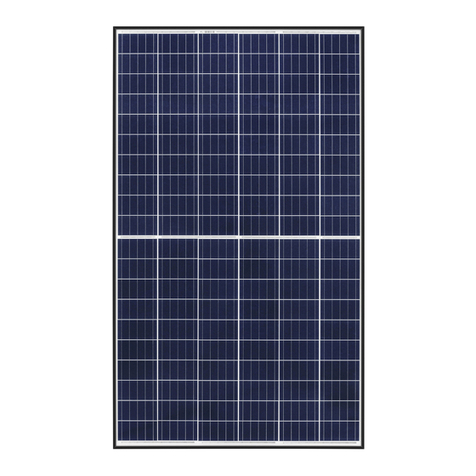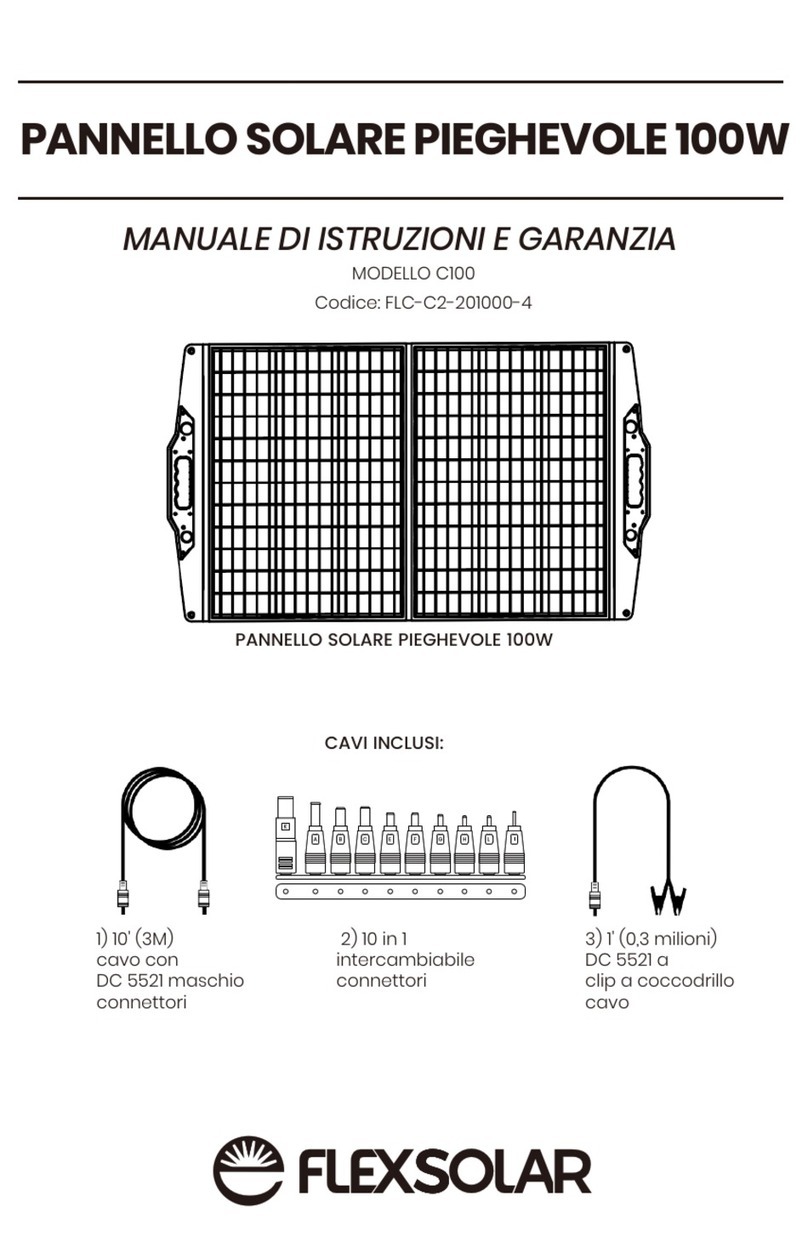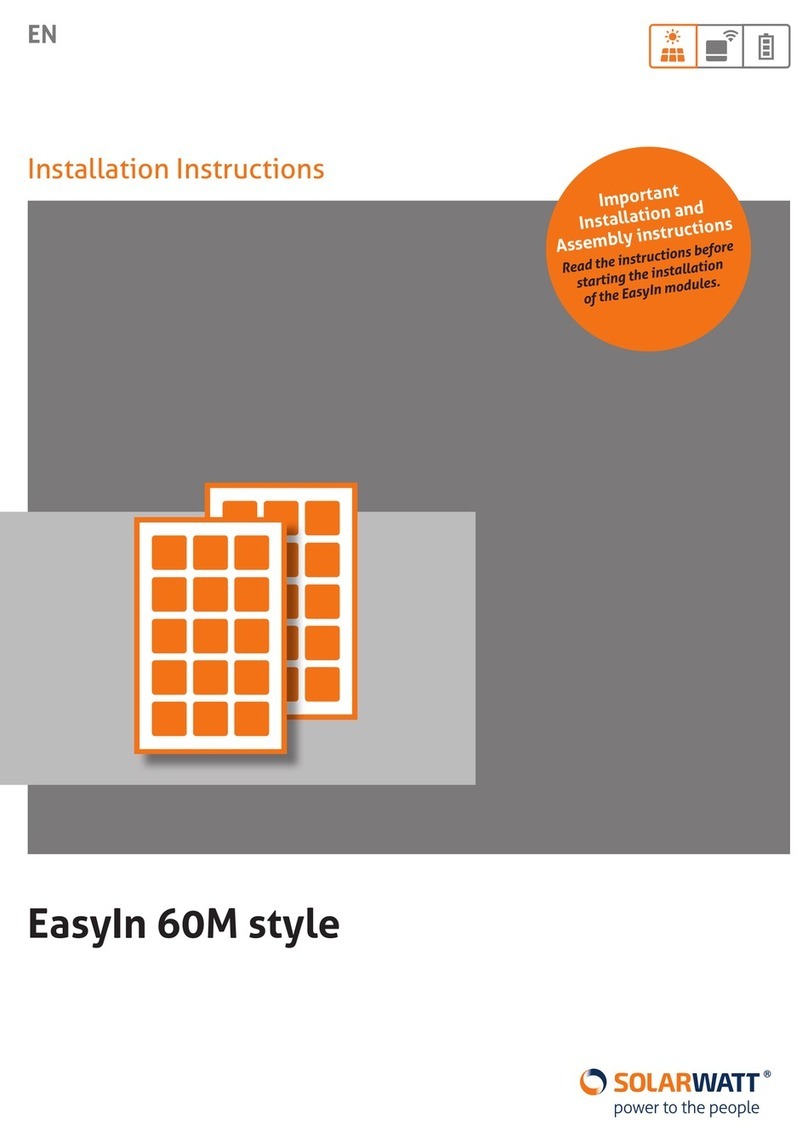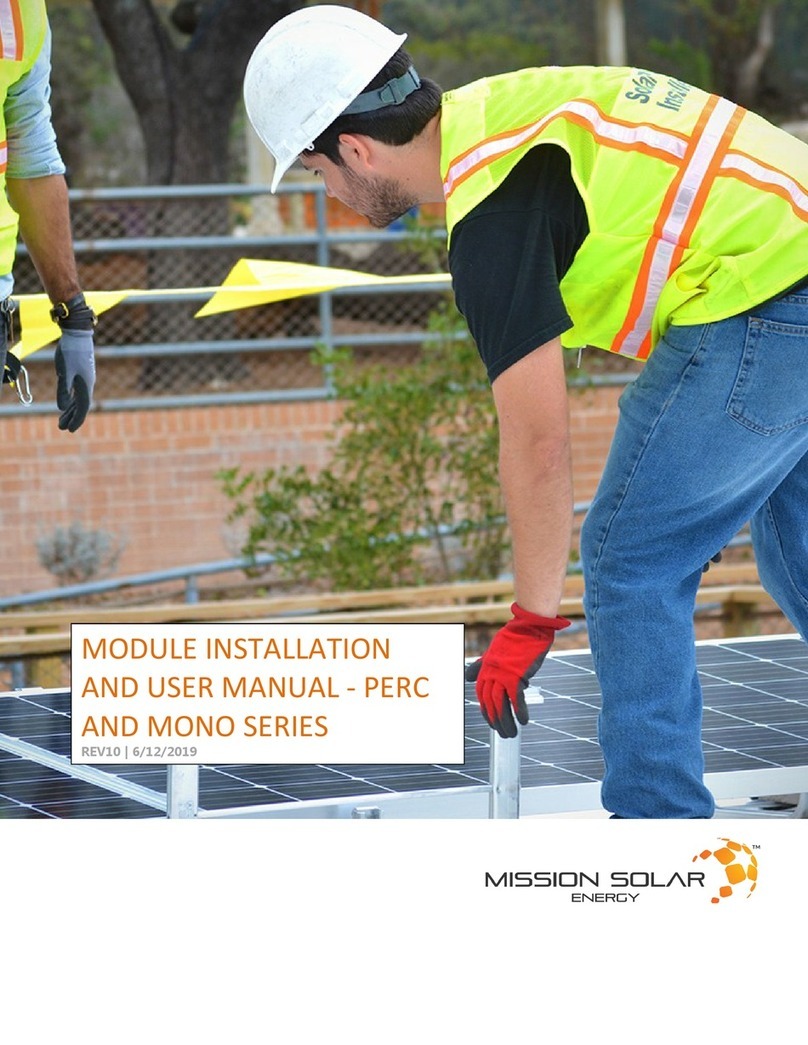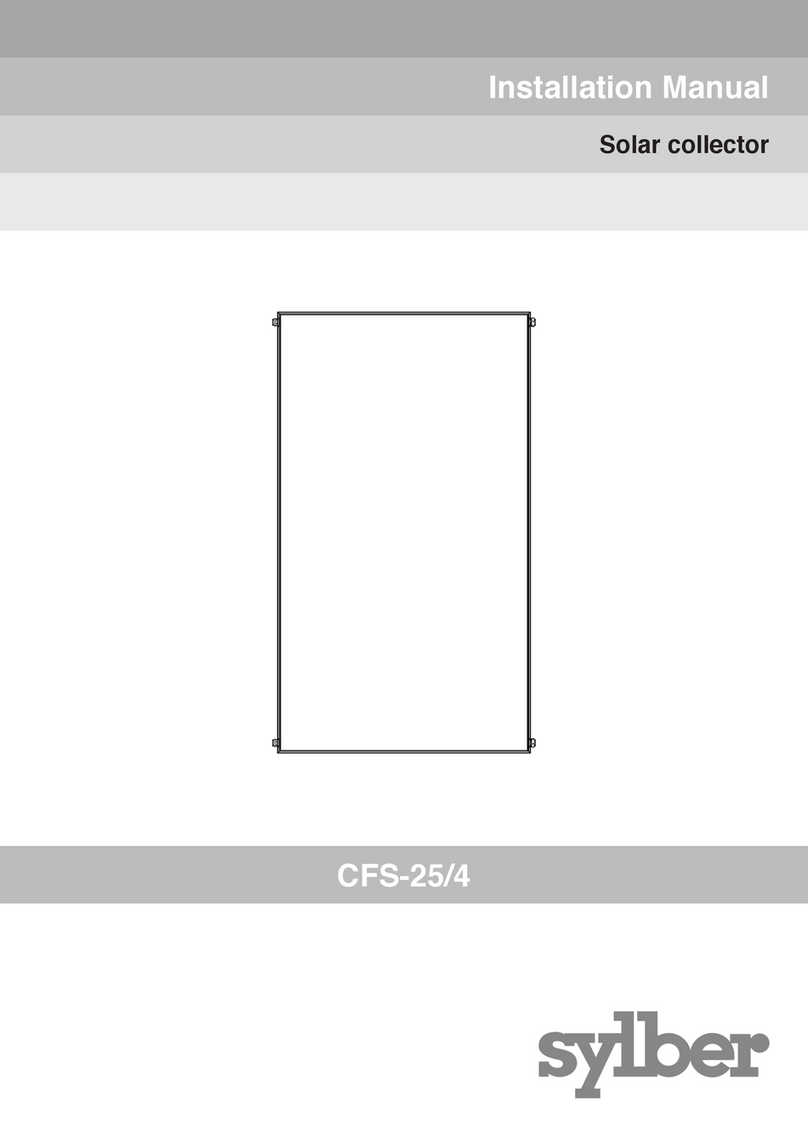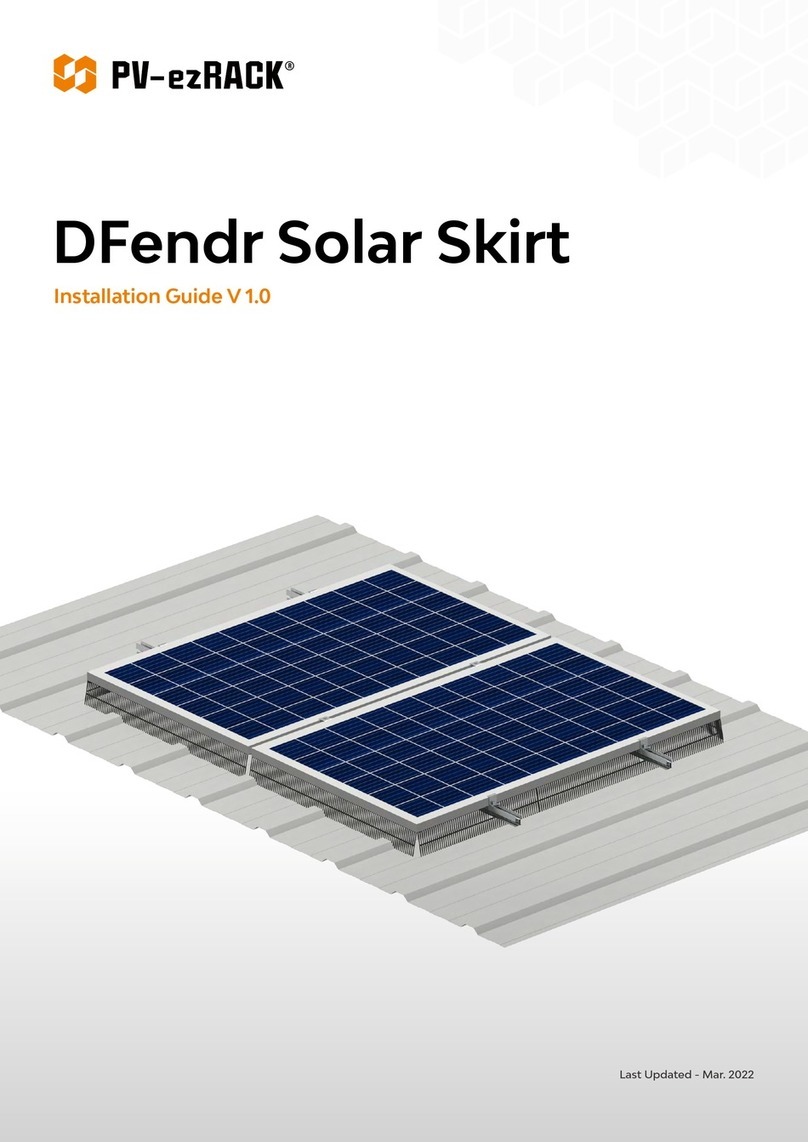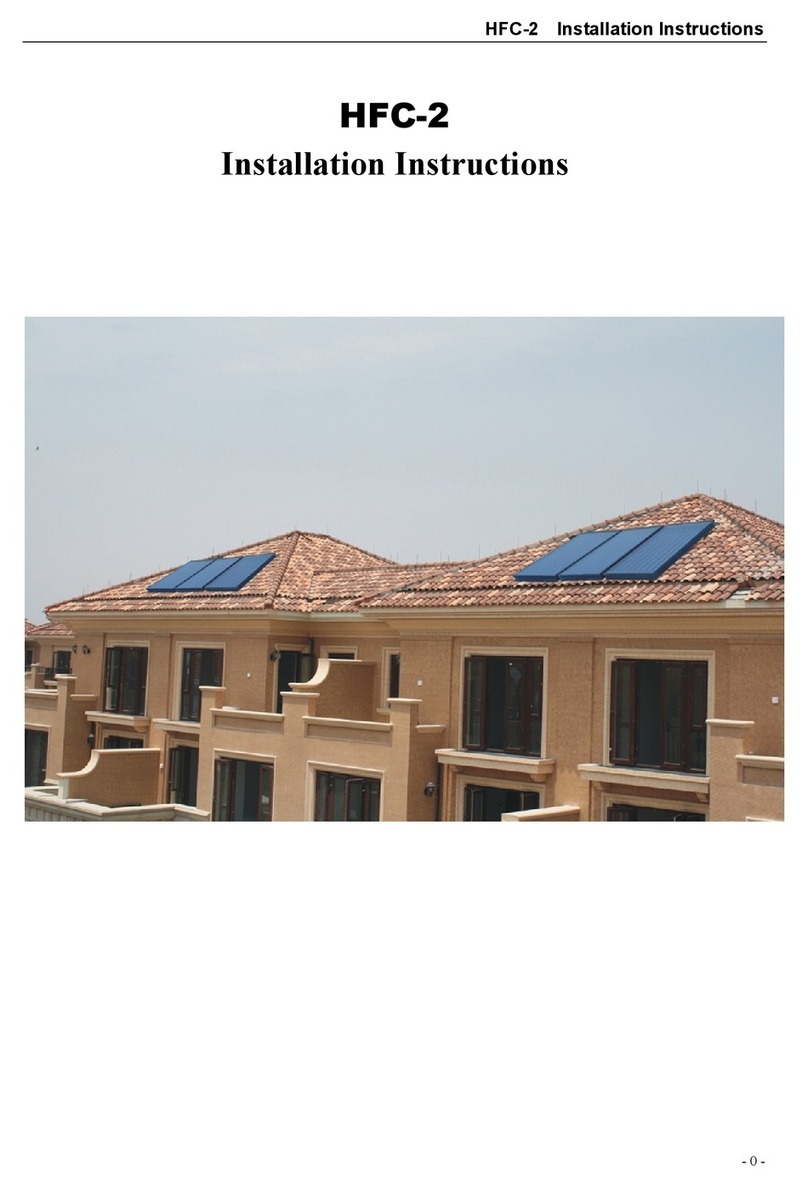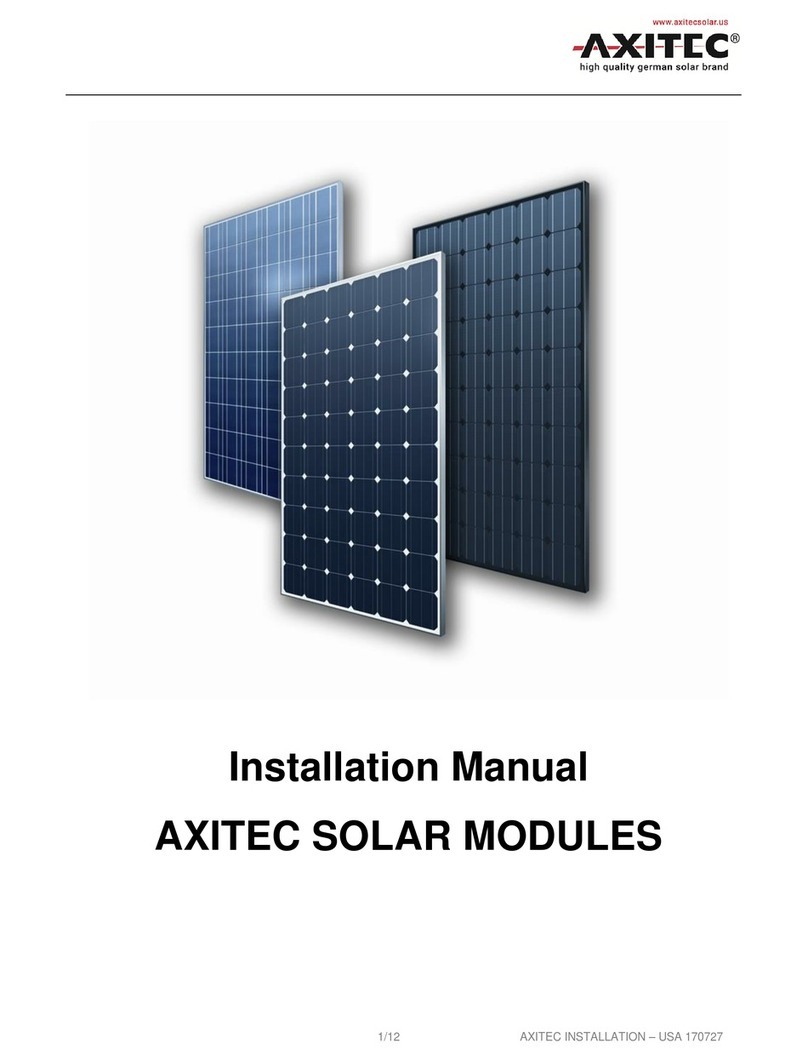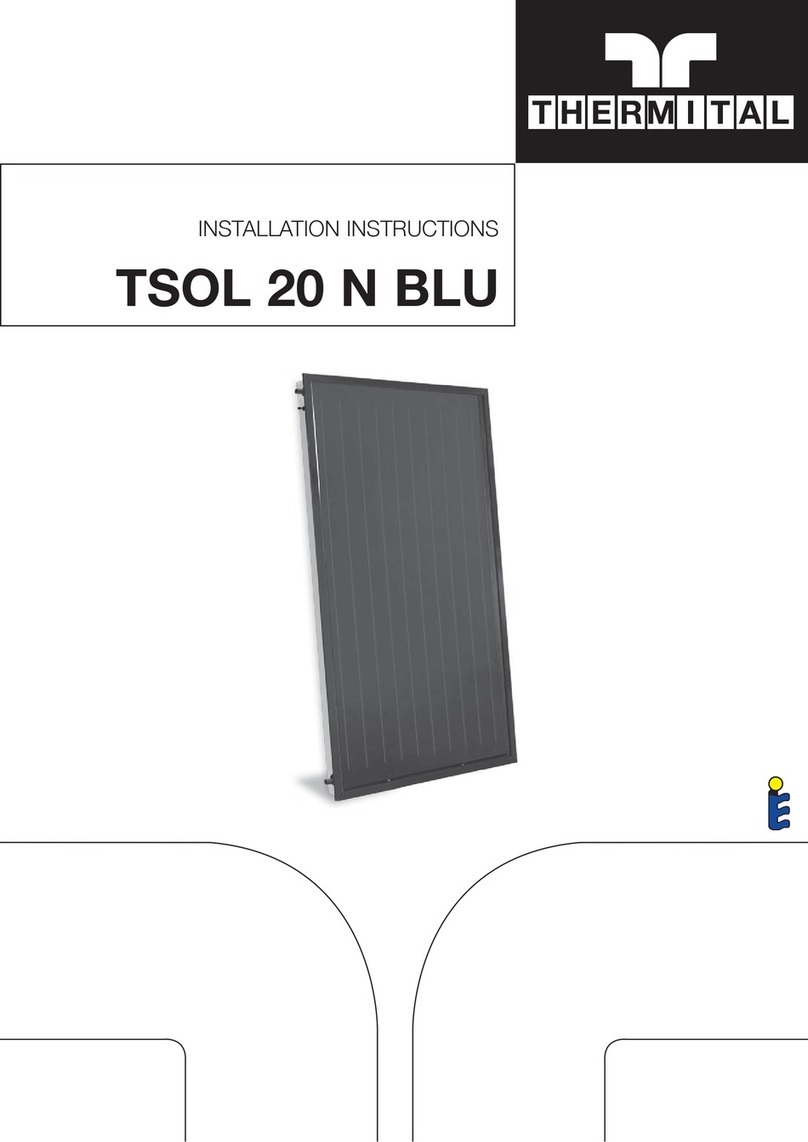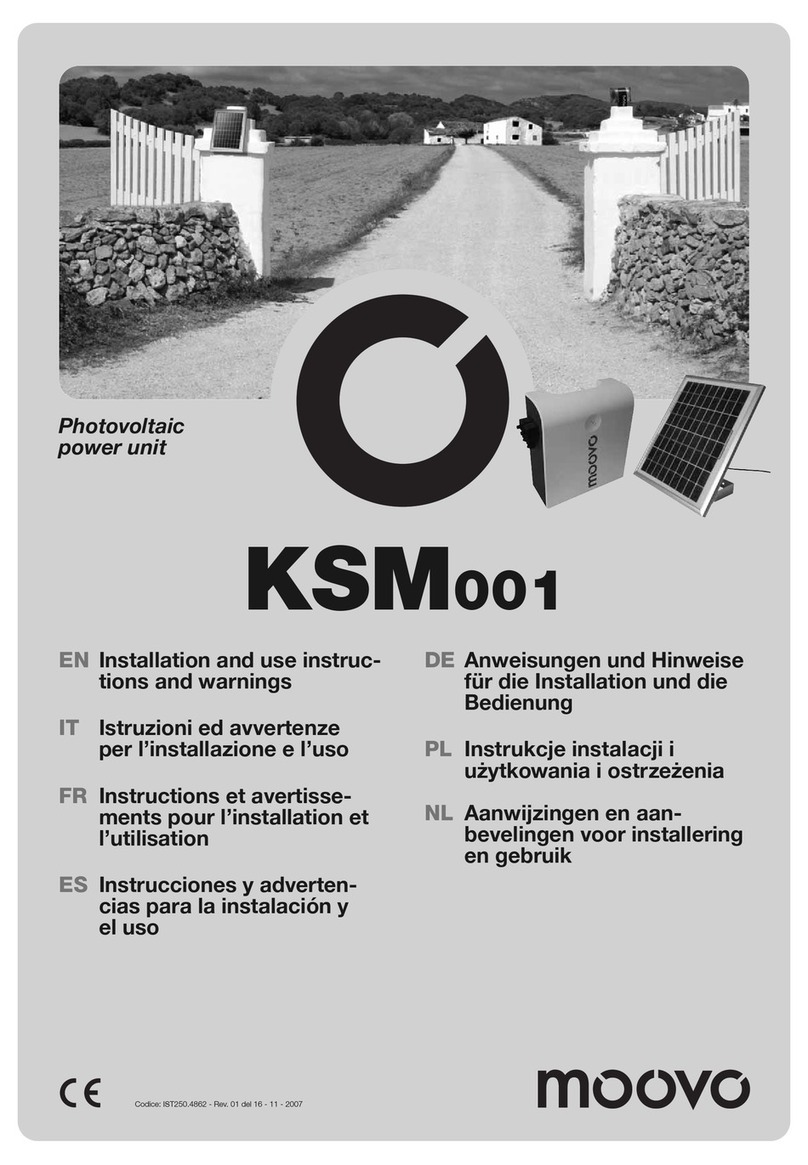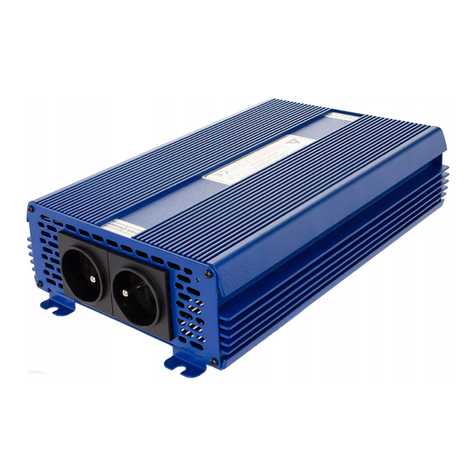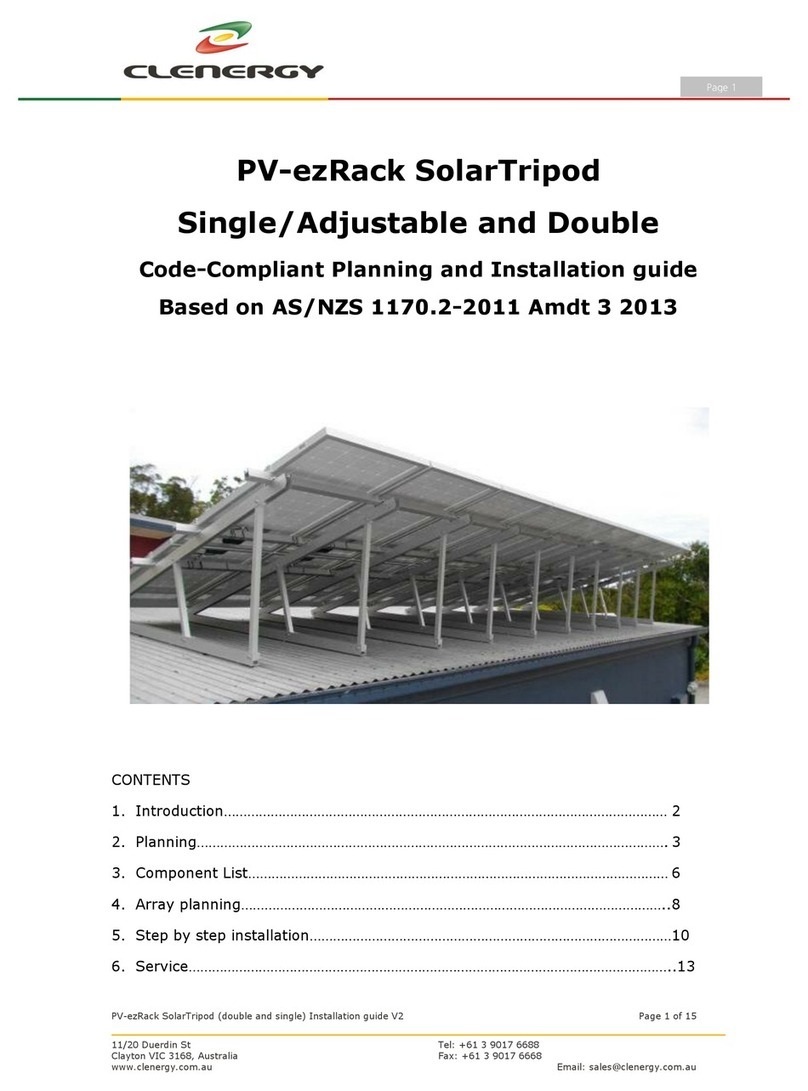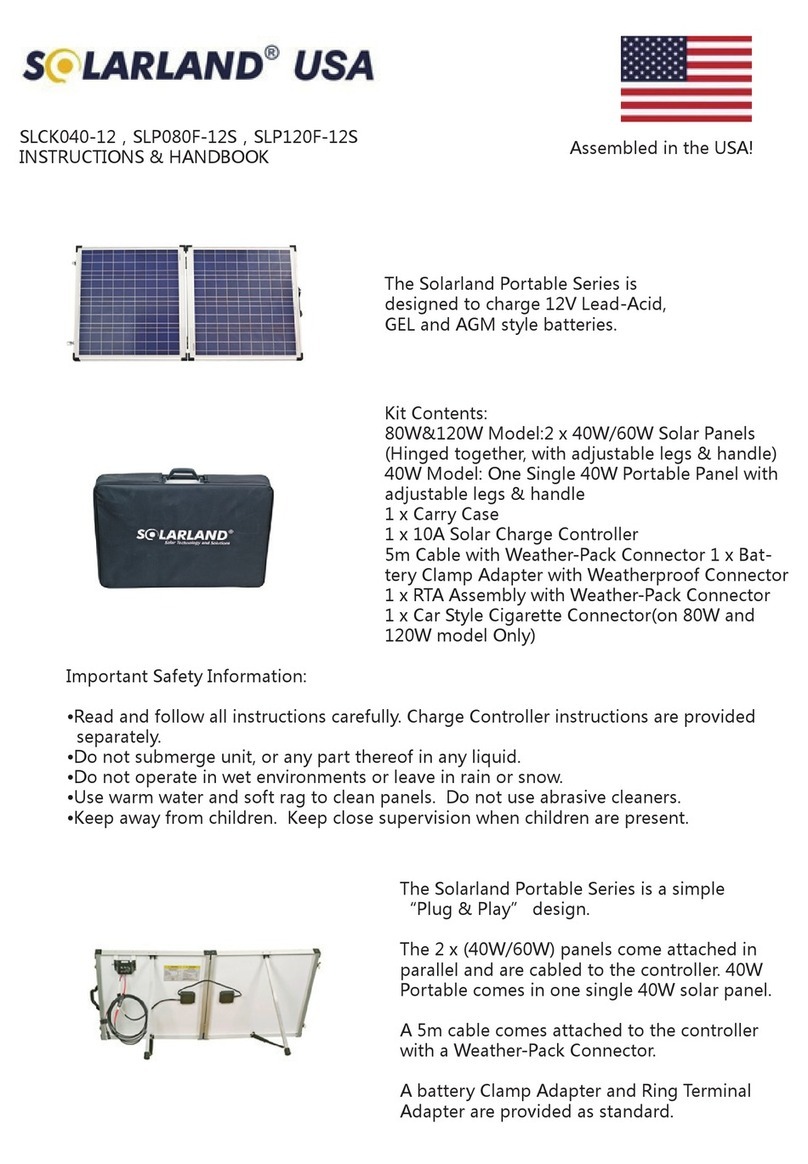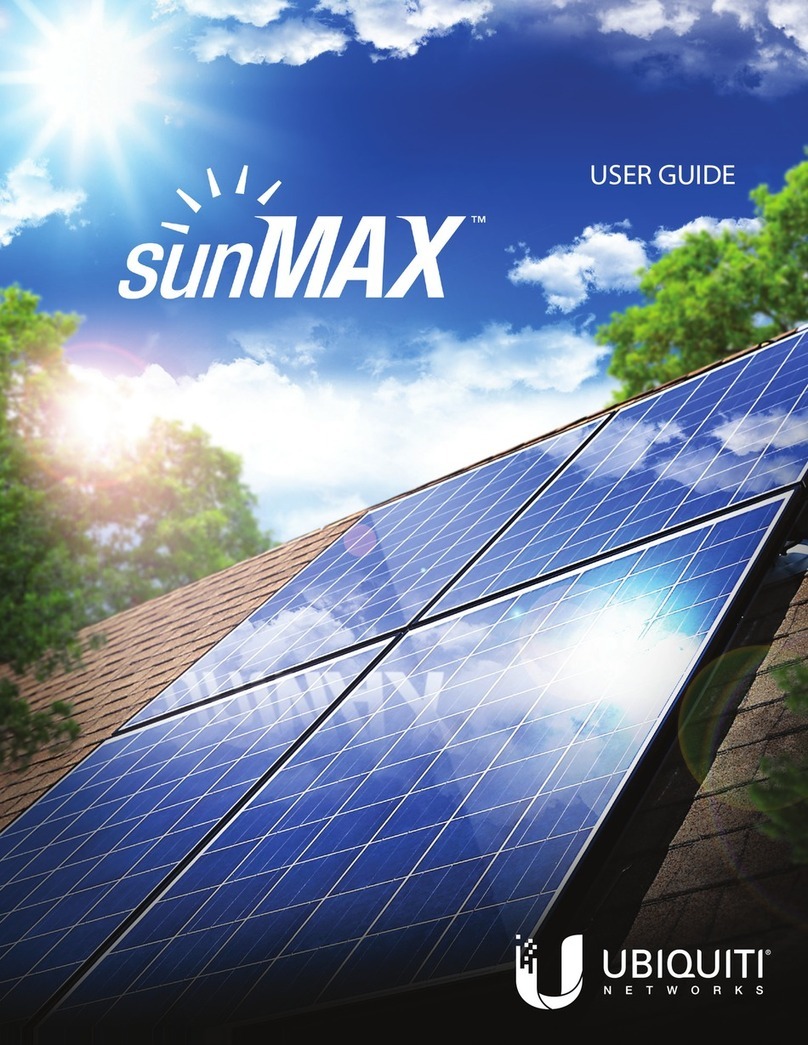
8
Installation
INSTALLATION
b
Solar collectors must be installed with the correct mount-
ing kit (which includes all necessary rails and brackets) as
listed in the Catalogue.
GENERAL INSTRUCTIONS
Protective lm
A protective film is applied to the glass of the solar collector to
protect the absorber against solar irradiation and prevent the so-
lar collector from becoming too hot if it is not going to be put into
service immediately.
Fill the system, but do not remove the lm
until you are ready to put the system into service.
Take care
when removing the film as it may be electrostatically charged. Do
not leave the protective film in place for longer than 12 months.
Once removed, the protective film cannot be re-used. Dispose
of the protective film in compliance with legislation governing the
disposal of PVC.
Assembly
The system must be installed by specialist personnel. Use only
the assembly material supplied with the solar collector. The sup-
porting framework and all masonry or brickwork fixing points
must be checked by a person expert in static loading, and must
be suitable for the nature of the installation site.
Static load
The solar collector must only be installed on roofs or frames that
are strong enough to support its weight. The strength of the roof
or frame must be verified on site by a person expert in static load-
ing before the solar collector is installed. During this process, it is
important to verify the suitability of the supporting frame to hold
the screw fasteners that fix the solar collector in place. An expert
in static loading must verify that the entire frame complies with
relevant standards, especially in areas liable to snow and areas
exposed to high winds. Conditions (gusts of wind, formation of
wind vortices, etc.) at the point where the solar collector is to be
installed must be carefully considered since these can increase
the loads on the supporting structure.
Lightning protection
The metal piping of the solar heating circuit must be connect-
ed to the main potential compensation bar by a (yellow-green)
copper wire (H07 V-U or R) of at least 16 mm
2
. If a lightning con-
ductor system is already installed, the solar collectors may be
connected to the existing system. Alternatively, the solar collector
piping may be connected to ground via a ground wire sunk into
the earth. Ground wires must be sunk outside the house. The
ground wire must be connected to the potential compensation
bar through a wire of the same diameter.
Water connections
When solar collectors are installed in a line, they must be in-
ter-connected by means of expansion fittings. Fit seal rings at
both ends of the connection fittings, taking care to ensure that
they are correctly positioned in their seats. Make all the neces-
sary connections, then check that all the ring nuts are properly
tightened. If the pipes used to connect the ends of the solar col-
lector line to the rest of the system are not sufficiently flexible to
absorb the stress imparted by thermal expansion, fit compen-
sating devices at both ends of the line (U-type expansion joints,
sections of flexible hose or dedicated expansion joints). Up to 6
collectors may be connected in a line, but only if the above pro-
visions are made. When tightening a fitting with a pipe wrench or
spanner, always hold the opposite fitting steady with a second
tool to avoid damaging the absorber.
b
All pipes in the water circuit must be insulated in conform-
ity to relevant standards. Lagging and insulation must be
protected against damage by the weather and birds and
animals.
Angle of collectors / General
Solar collectors are designed to be installed at angles of between
15° (minimum) and 75° (maximum). Make sure that the bleed
and vent valves of the collectors remain open while the collectors
are being installed. Take care to protect all fittings, connections,
bleed and vent valves against dirt and dust etc. In installations
which serve primarily to produce domestic hot water in the sum-
mer, install the collectors facing from east to west at an angle of
between 20 and 60°. The ideal orientation is southwards, at an
angle equal to the latitude of the location minus 10°. If the system
sustains the greatest thermal load in the winter (as in systems that
combine domestic hot water production with central heating), in-
stall the collectors facing south (or south-east or south-west) at
an angle greater than 35°. The ideal orientation is southwards, at
an angle equal to the latitude of the location plus 10°.
b
The collectors must be installed at a safe distance from
live electrical power lines and electrical systems in accord-
ance with the laws and regulations in force in the coun-
try of installation. In the absence of specific standards,
the minimum distance that must be maintained between
the installation and the nearest point to which power lines
approach when blown by the wind and sagging in warm
climatic conditions is: 3 m for rated voltages of 1 kV; 3.5 m
for rated voltages between 1 and 30 kV; 5 m for rated volt-
ages between 30 and 132 kV; 7 m for rated voltages >132
kV and for unknown voltages. All non-electrical installation
work that has to be performed near live and unprotect-
ed electrical power lines when there is any possibility of
contact with them must be carried out in conformity to the
laws and regulations in force in the country of installation.
WARNING! Contact with open, live electrical wires may
lead to electrocution and may even be fatal.
b
Always wear safety goggles when drilling. Always wear
safety shoes, cut-proof protective gloves and a safety hel-
met when performing installation work.
b
Before beginning installation work on roofs, install the nec-
essary fall prevention and fall arrest devices and ensure
that all applicable safety standards are applied. Use only
tools and materials that conform to the safety standards
that are applicable in the place of work.
b
Only wear overalls that have a safety harness (with a suit-
able safety or fall-arrest belt, ropes or slings, fall dampers
or dissipaters). In the absence of adequate fall prevention
and security devices, failure to use a proper safety harness
may lead to falls from great heights with serious or even
fatal consequences.
b
The use of ladders leaned against walls can lead to seri-
ous falls if the ladder slips, slides of falls. When using lad-
ders, always ensure that they are stable, and that suitable
ladder stops are present. If possible secure the ladder with
hooks. Make sure that there are no live electrical wires near
the ladder.
b Ventilation holes in the collectors allow the air inside
to circulate, expand and contract freely during heat-
ing and cooling cycles. Condensation can form on
the inside of the glass as a result of cooling overnight
or even under conditions of high humidity during
the day. This phenomenon is normal and must not
be considered a defect. This condensation has no
impact on the collector’s thermal efficiency as it dissi-
pates when the collector warms up in the day.
